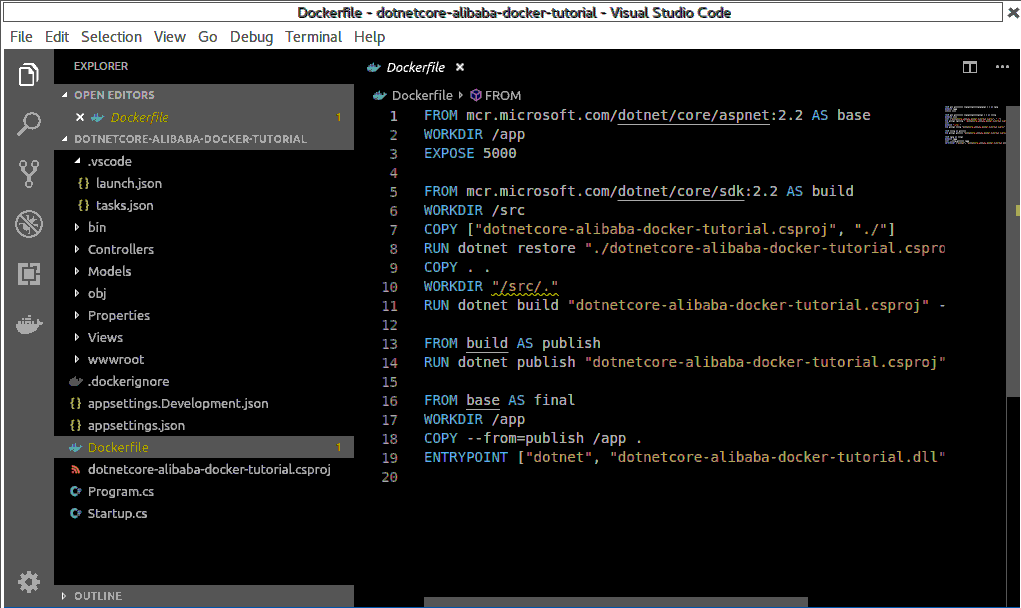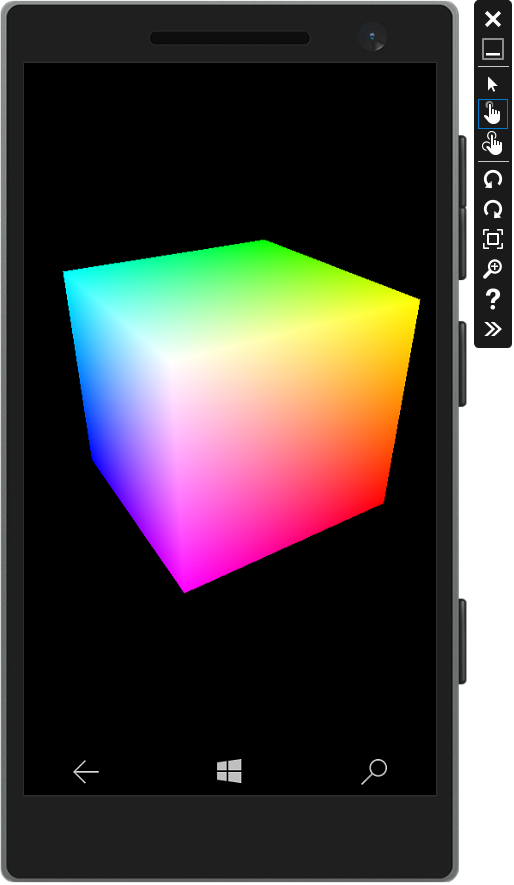Docker is a very popular container platform that lets you easily package, deploy, and consume applications and services. Whether you are a seasoned Docker developer or just getting started, Visual Studio Code makes it easy to author Dockerfile and docker-compose.yml files in your workspace.
Install the Docker extension
By the end of this module, you'll be able to: Install the Visual Studio Code Remote - Containers extension Load and connect to a project in a Docker container Access ports in the container from your local machine. The Visual Studio Code Remote - Containers extension lets you use a Docker container as a full-featured development environment. It allows you to open any folder inside (or mounted into) a container and take advantage of Visual Studio Code's full feature set.
Docker support for VS Code is provided by an extension. To install the Docker extension, open the Extension Viewlet by pressing kb(workbench.view.extensions) and search for vscode-docker to filter the results. Select the Docker Support extension.
While here, you can install many other extensions to make you more productive with VS Code.
Tip: The extensions are dynamically queried. Click on an extension tile to read the description and reviews to decide which extension is best for you. See more in the Marketplace.
Dockerfiles
With Docker, you can build images by specifying the step by step commands needed to build the image in a Dockerfile. A Dockerfile is just a text file that contains the build instructions.
VS Code understands the structure of Dockerfiles as well as the available set of instructions, meaning we can give you a great experience when authoring these files in the tool.
- Create a new file in your workspace named
Dockerfile - Press
kb(editor.action.triggerSuggest)to bring up a list of snippets corresponding to validDockerfilecommands
- Press
kbstyle(Tab)to move between fields within the snippet. For example, with theCOPYsnippet you can fill in thesourceand then presskbstyle(Tab)to move to thedestfield.
In addition to snippets for authoring your Dockerfile, Visual Studio Code will provide you with a description of any Docker command you hover over with the mouse. For example, when hovering over WORKDIR you will see the following.
For more information on Dockerfiles, check out Dockerfile best practices on docker.com.
Docker Compose
Docker Compose lets you define and run multi-container applications with Docker. You define what the shape of these containers look like with a file called docker-compose.yml.
Visual Studio Code's experience for authoring docker-compose.yml is also very rich, providing IntelliSense for valid Docker compose directives and it will query Docker Hub for metadata on public Docker images.

- Create a new file in your workspace called
docker-compose.yml - Define a new service called
web: - On the second line, bring up IntelliSense by pressing
kb(editor.action.triggerSuggest)to see a list of all valid compose directives.
- For the
imagedirective, you can presskb(editor.action.triggerSuggest)again and VS Code will query the Docker Hub index for public images.
VS Code will first show a list of popular images along with metadata such as the number of stars and description. If you continue typing VS Code will query the Docker Hub index for matching images, including searching public profiles. For example, searching for Microsoft will show you all the public Microsoft images.
Docker commands
Many of the most common Docker and docker-compose commands are built right into the Command Palette (kb(workbench.action.showCommands)).
Dockerfile linting
You can enable linting of Dockerfile files through the docker.enableLintingsetting. The extension uses the dockerfile_lint rules based linter to analyze the Dockerfile. You can provide your own customized rules file by using the docker.linterRuleFile setting. You can find more information on how to create rules files as well as sample rules files in the dockerfile_lint project.
Running commands on Linux
By default, Docker runs as the root user on Linux, requiring other users to access it with sudo. This extension does not assume root access, so you will need to create a Unix group called 'docker' and add users to it. Instructions can be found here: Create a Docker group
 -->
-->In this tutorial, you'll learn about creating and deploying Docker apps, including using multiple containers with a database, and using Docker Compose. You'll also deploy your containerized app to Azure.
Start the tutorial
If you've already run the command to get started with the tutorial, congratulations! If not, open a command prompt or bash window, and run the command:

You'll notice a few flags being used. Here's some more info on them:
-d- run the container in detached mode (in the background)-p 80:80- map port 80 of the host to port 80 in the containerdocker/getting-started- the image to use
Tip

You can combine single character flags to shorten the full command.As an example, the command above could be written as:
The VS Code Extension
Before going too far, we want to highlight the Docker VS Code Extension, which gives you a quick view of the containers running on your machine. It gives you quickaccess to container logs, lets you get a shell inside the container, and lets you easily manage container lifecycle (stop, remove, and so on).
To access the extension, follow the instructions here. Use the Docker icon on the left to open the Docker view. If you open the extension now, you will see this tutorial running! The container name (angry_taussig below) is a randomly created name. So, you'll most likely have a different name.
What is a container
Now that you've run a container, what is a container? Simply put, a container is simply another process on your machine that has been isolated from all other processes on the host machine. That isolation leverages kernel namespaces and cgroups, features that have been in Linux for a long time. Docker has worked to make these capabilities approachable and easy to use.
Note
Metastock pro 11.0 for esignal. Creating Containers from ScratchIf you'd like to see how containers are built from scratch, Liz Rice from Aqua Security has a video in which she creates a container from scratch in Go: Photoshop cs3 extended serial code.
What is a container image
When running a container, it uses an isolated filesystem. Pes 2017 full crack. This custom filesystem is provided by a container image. Since the image contains the container's filesystem, it must contain everything needed to run an application - all dependencies, configuration, scripts, binaries, and so on. The image also contains other configuration for the container, such as environment variables, a default command to run, and other metadata.

We'll dive deeper into images later on, covering topics such as layering, best practices, and more.
Note
If you're familiar with chroot, think of a container as an extended version of chroot. The filesystem is simply coming from the image. But, a container adds additional isolation not available when simply using chroot.
Next steps
Visual Studio Docker File
Continue with the tutorial!
